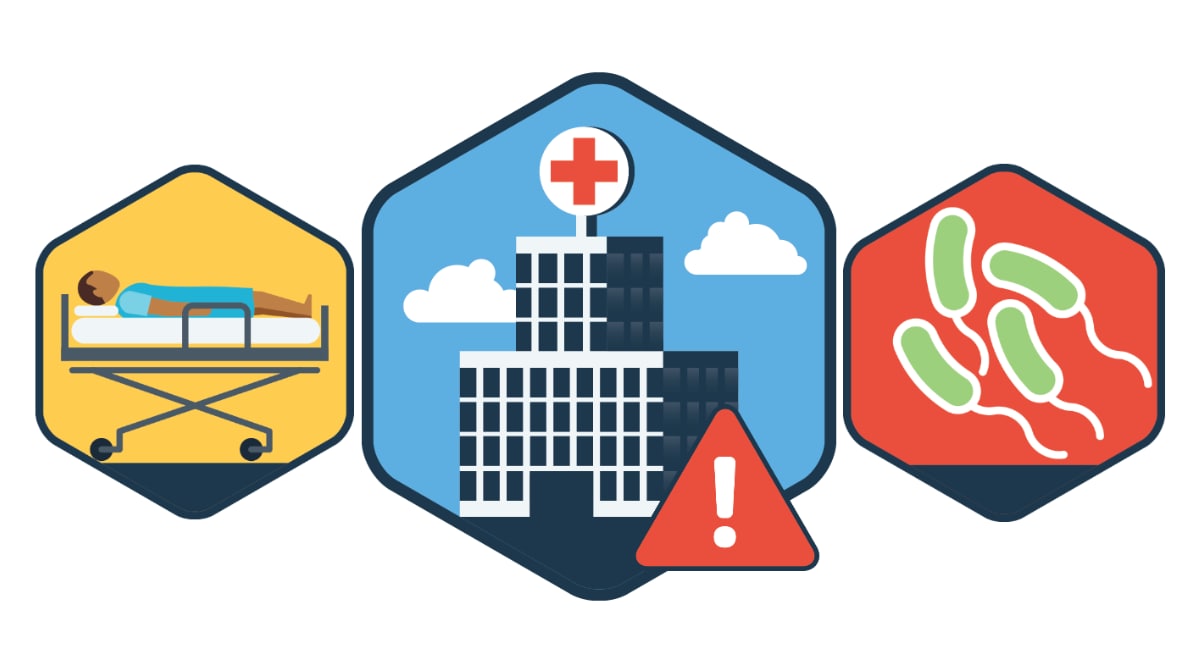Key points
- Not all healthcare settings are defined as healthcare facilities for the purpose of Legionnaires' disease surveillance.
- Healthcare-associated cases can be further classified as presumptive or possible.

Defining healthcare facilities
For the purpose of Legionnaires' disease surveillance, healthcare facilities fall into one of four settings categories:
- Clinic
- Hospital
- Long-term care facility
- Other
Examples of healthcare facilities by setting
- Acute care hospital: general or specialty
- Children’s hospital
- Critical access hospital
- Long-term acute care hospital
- Psychiatric hospital
- Inpatient hospice
- Nursing home
- Psychiatric residential treatment facility
- Rehabilitation hospital
- Skilled nursing facility
- Outpatient laboratories
- Pharmacies
What isn't a healthcare facility?
CDC's definition for Legionnaires' disease surveillance purposes doesn't include:
- Assisted living facilities
- Group homes
- Prisons
- Senior living facilities
Assisted living facilities provide custodial care without skilled nursing. They provide assistance with activities of daily living, like bathing and dressing. Senior living facilities provide independent living for the elderly.
Consider these facilities in outbreak investigations
Classifying cases
Healthcare-associated cases that meet clinical and laboratory criteria for confirmed or suspect Legionnaires' disease are further classified as presumptive or possibleC. The distinction between the classifications is the duration of healthcare exposure.
- Stayed at one or more healthcare facilities
- Duration: ≥10 days of continuous stay during 14-day exposure period
- Don't meet the above criteria
- Stayed at or visited one or more healthcare facilities
- Duration: Any portion of the 14 days before symptom onset
A patient discharged directly from one healthcare facility to another is an example of a continuous stay across multiple healthcare facilities.
Defining healthcare-associated Legionnaires' disease
CDC also tracks the type of healthcare exposure:
- Employee
- Inpatient
- Outpatient
- Visitor or volunteer
Only inpatient cases need to be assessed to see if they can be classified as a presumptive case.
Cases involving employees, outpatients, visitors, and volunteers could be associated with a healthcare facility. However, they are likely to have have had other possible sources of exposure.
- Inpatients
- Employees
- Outpatients
- Visitors or volunteers
- Examples of specialty clinics include outpatient cancer treatment centers, outpatient infusion centers, dental offices, or subspecialist offices that provide clinical care not affiliated with a hospital. Other healthcare facilities not listed here include associated sites such as pharmacies and outpatient laboratories.
- If a clinic visit or same-day surgery occurs within a hospital, the setting for that exposure is hospital, not clinic.
- Standardized definitions can be found in Appendix 3 of the updated CSTE Position Statement.
